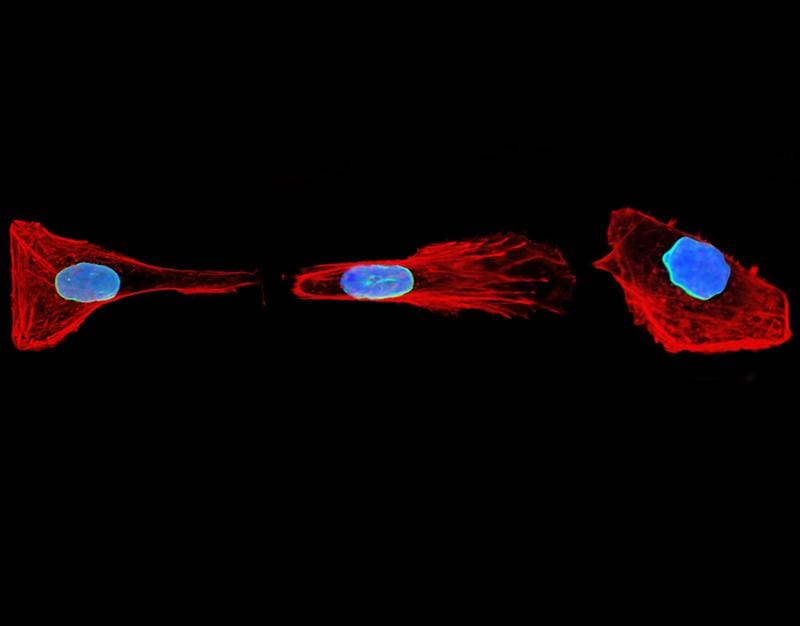Cells with mechanical memory: New insights into cell movement
Researchers at the University of Basel and the University of Mons in Belgium have discovered that migrating cells have a mechanical memory that helps them move more efficiently through narrow tissue structures. This finding, published in the journal Nature Physics, could have far-reaching implications for understanding wound healing, infection defense and the spread of cancer.
Cells such as immune cells, embryonic cells or tumour cells move through the body to fulfil their functions ŌĆō whether in wound healing, immune defence or the formation of metastases. In doing so, they often have to pass through narrow spaces in the tissue that are smaller than they are. This requires deformation of the cell, which costs energy and time. The new study shows that cells learn to overcome such constrictions more efficiently by remembering earlier passages and adjusting their shape accordingly.

The researchers studied the behavior of individual cells in artificial microstructures that replicate narrow tissue channels. They found that cells switch between two shapes: a flat, elongated shape and a compact, spherical shape. In narrow channels, cells increasingly prefer the compact shape, in which they pull in one direction with a single process. Surprisingly, cells often maintain this compact shape even after leaving the constriction, which prepares them for further obstacles.
This mechanical memory is based on changes in the actin scaffold, a central component of the cytoskeleton that is responsible for shape and stability. In confined spaces, the cell reinforces this framework, making the compact shape more stable. However, the remodeling of the actin scaffold is time-consuming, which explains the memory effect: Cells that have been constricted for a long time retain the compact shape in order to be able to react more quickly to new obstacles.
The results illustrate how cells optimize their mobility in complex environments. This could improve the efficiency of processes such as wound healing or infection defense. At the same time, the ability of tumor cells to move more quickly through tissue carries risks, as it could facilitate metastasis. The study combines experimental observations with a mathematical model that describes the dynamics of cell movement and opens up new perspectives for biomedical research.
Original Paper:
Yohalie Kalukula, Marine Luciano, Gleb Simanov, Guillaume Charras, David B. Br├╝ckner and Sylvain Gabriele.
The actin cortex acts as a mechanical memory of morphology in confined migrating cells.
Nature Physics (2025), doi: 10.1038/s41567-025-02980-z
Editor: X-Press Journalistenb├╝ro GbR
Gender Notice. The personal designations used in this text always refer equally to female, male and diverse persons. Double/triple naming and gendered designations are used for better readability. ected.




